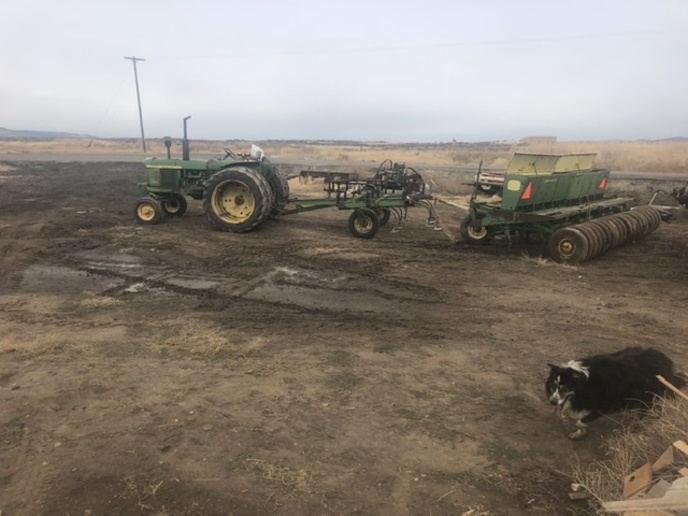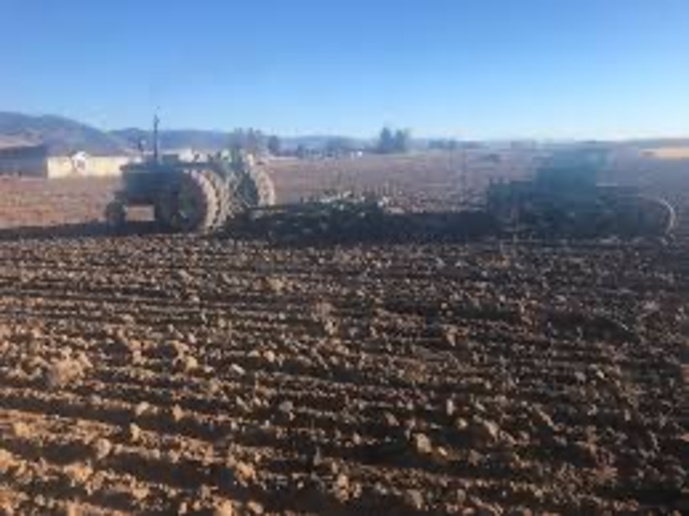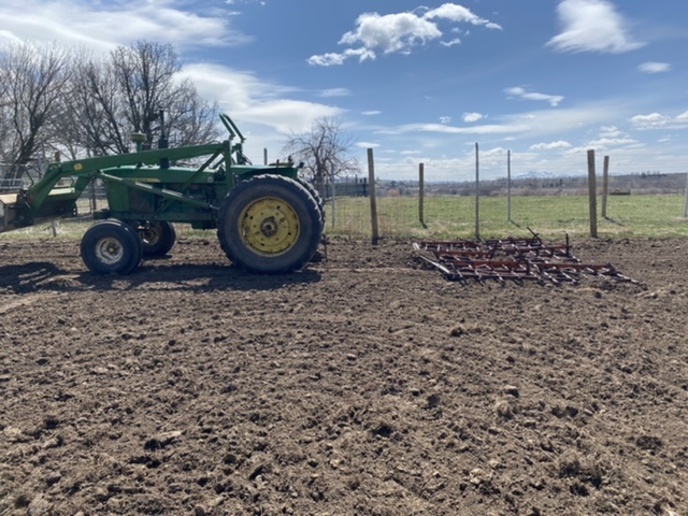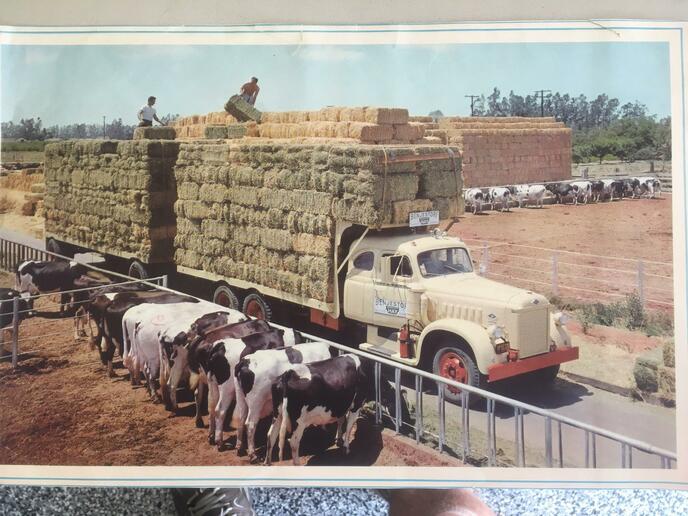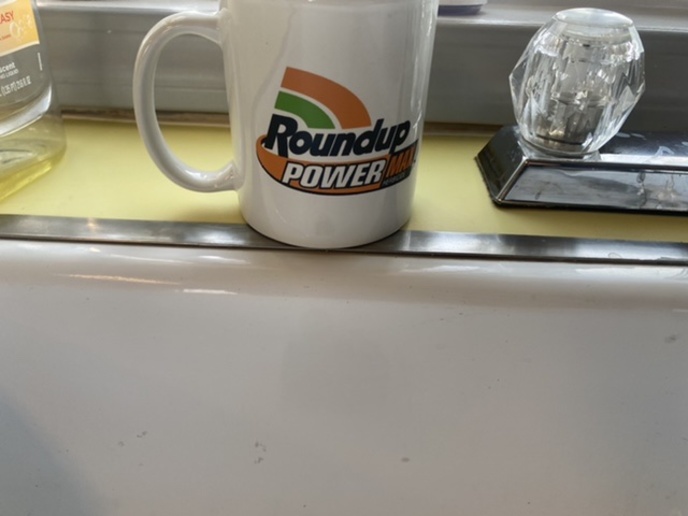I was born in Nov 1949. Dad and Mom started farming (first generation farmer, that had worked on other farms growing up) on Mom's G'mother's 90 acre farm in 1950. About 25 acres of river flat, and most of the rest gravelly loam, so it was good land. There was a one row dairy barn that held 17 cows, and a big old open barn with a wooden floor for loose hay, as well as a chicken coop and a few other small buildings. He started with a Farmall C, never had horses. About 1954, he traded for a new Super C and plow, cultivators, mowing machine, and carrier, all fast hitch. Somewhere in there, he acquired a Case C, too. About '54, he started taking the wood floor out of the big barn, so he could turn the barn into a cow stable. I remember the time when I was helping take up the planks, and there was a skunk underneath. I panicked, but Dad said he's more scared of us than we are of him, just be calm and he'll leave. Didn't get sprayed. Dad had 2x12 planks sawed from trees in the woods, a lot of maple and oak, for hay mow floor joists. I still have some of them incorporated in my barn that were salvaged when the barns were torn down in the early 70s. The big barn ended up with about 20 more tie stalls, with low concrete curbs between each cow, a couple box stalls, a hay mow, and 2nd floor chicken coop on the side of the hay mow. also a barn cleaner that was a rubber mat in the gutter behind the cows, that rolled up under the end of the cleaner chute, after it carried the manure and dumped it in the ground drive New Idea spreader. In 1957, he added a shed alongside the big barn to be able to house more animals.
BUT in 1958, he had a chance to buy a 400 acre farm about 7 miles upriver from home, with about 200 acres of cropland. He didn't quibble about price, but did get a very nnalert from the widow that he bought it from. My first lesson in economics- you'll pay twice for something with regular interest- once in the cost and twice in the interest. He added a 3 year old Farmall 300 and soon a 300 utility to the Super C and Case. After a couple years, the Case C had problems and was replaced by a Case D. The barn had 100 stanchions, and he was milking about 90.He added one of the first Herringbone double 4 parlors in the county in 1961, and a bulk tank. We still had the use of Grandpa's farm, so around 1962, Dad asked the old neighbor if he could borrow a side rake for the hay at the old farm, because all we had for a rake was on old David Bradley beater that whipped all over the road if you went much over 6 mph. the rake that showed up was a NH PTO rake hooked to a 3 year old IH 460 Hi-utility. 6 cylinder AND power steering. Raking was my job, and I was in high cotton.
By 65 and 66, we were plowing with the 300 and FH 3 bottom plow, the Super C and 2 bottom FH, and hired the next door neighbor with their Farmall 350 and 3 bottom FH plow. Dad started looking for a bigger tractor to cut plowing hours. We had a 706D, JD 3020 and 4020, probably an Allis190XT, and a couple other brands, all lined up by the driveway. Very impressive and I wish I had a picture. Toward the end of the tryouts, the local Case/David Brown dealer showed up with a 880 or 990 and a 3 bottom plow on his truck for us to try. Dad was milking, so he told me to go see what I thought. I wanted no part of a DB, so the dealer and I went down on the flat where we had been demo'ing. I wanted to stall the DB, so I buried the plow as deep as it would go, but the SOB just kept chugging along. Dealer went back to the parlor and told Dad that boy likes to plow deep, doesn't he? Oh well. Before Dad made any purchase deals, he heard about a Farmall 806 that had been used 1 year on an irrigation pump in the Finger Lakes, and then the owner died. Narrow front, no fenders, just Fast Hitch. He bought that, and the 5 bottom IH 550 plow that we had been trying out. 1968 saw the addition of a 656 High Clear gas utility from a small dealer that had been using it as a lot tractor, until the floor plan came due. We spent the summer of 1970 changing the stanchion barn to home made freestalls, with a barn cleaner feeder in a shed off the side of the barn. The Super C became the scraping tractor. In 1971, a brand new IH 826 hydro came, traded the worn out Farmall 300 on it. Very interesting times.
I worked for Dad until 1980, when my wife and I bought our own farm. I had accumulated a JD 3010, Farmall M, and an Allis D14 to start with. A few years in, I got the 300 utility from Dad and resurrected it, and its still here but needing another rebirth. When Dad sold out in 1989, I bought his Super C, and had it here for about 2 months before it burned up in a barn fire. I also bought the 656 High utility and NI loader, and that is still here and working. My brother has Dad's 806. I looked for years to find another Case with brake pedals on either side of the seat, like the one Dad had. Not even sure od the model, but it had big old fenders. A guy in the tractor club had one that matched, and now it is here. Finally, last winter, I was able to buy the 460 Hi Utility that I drove in 1962, and brought it back to life.


